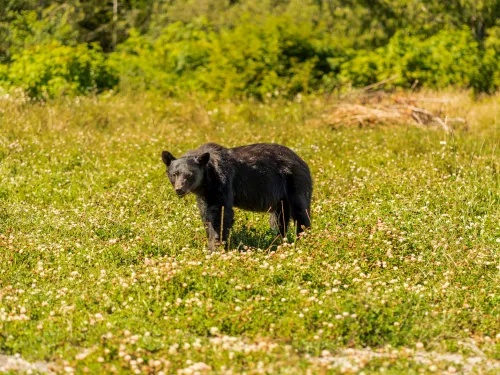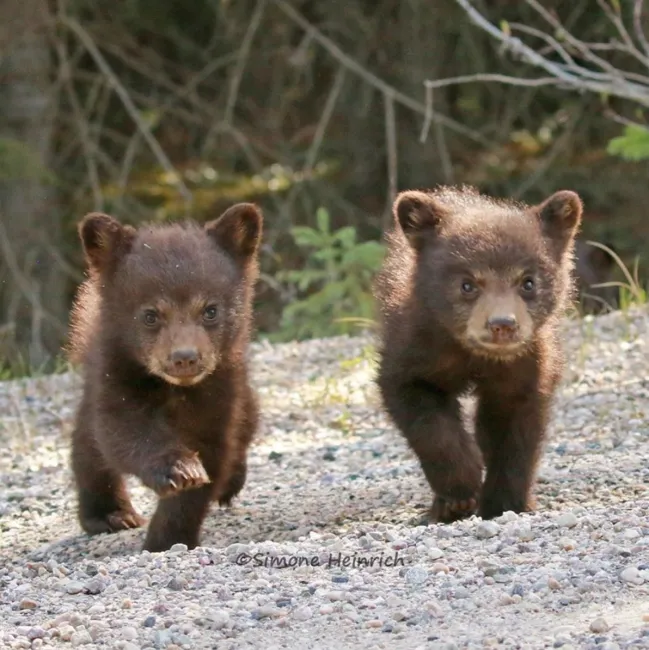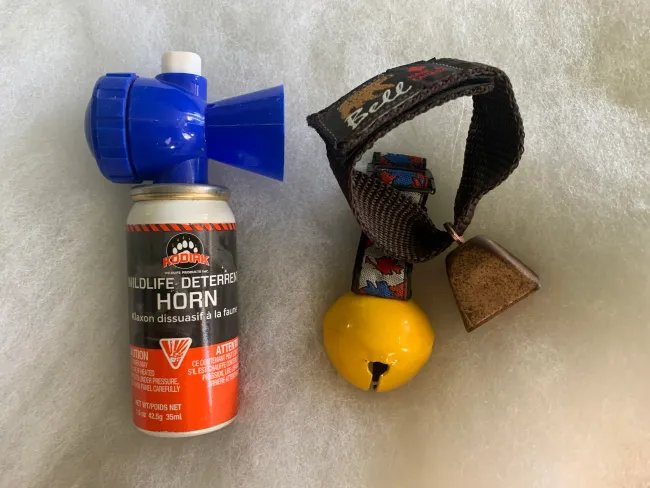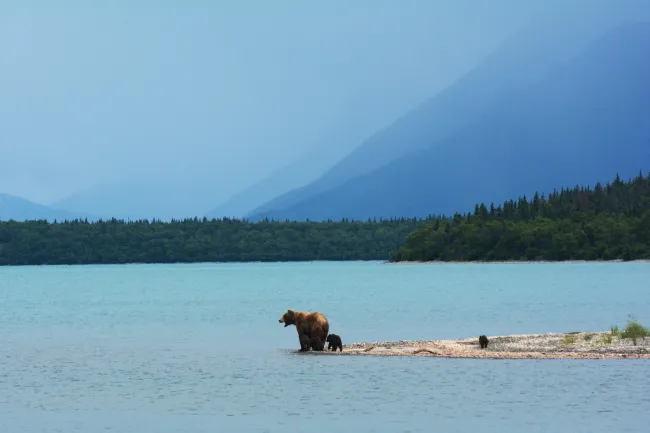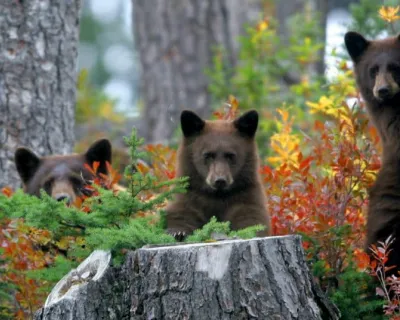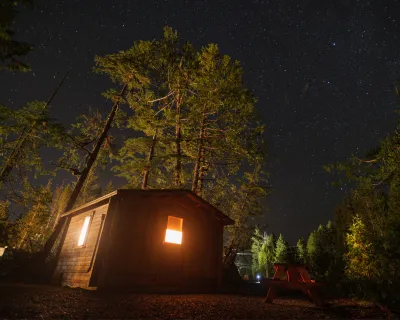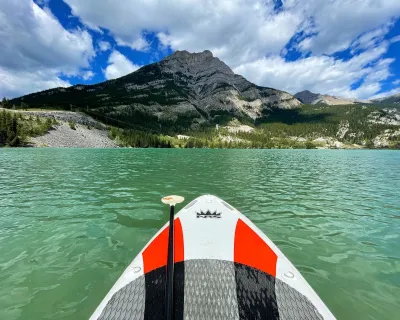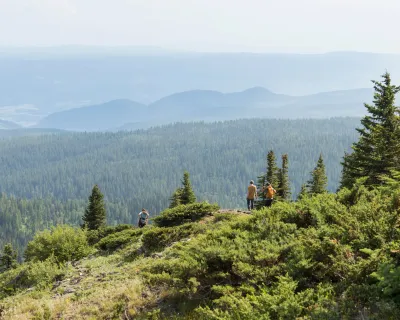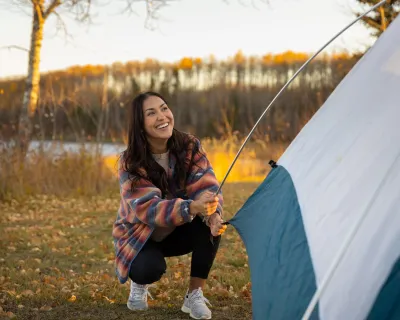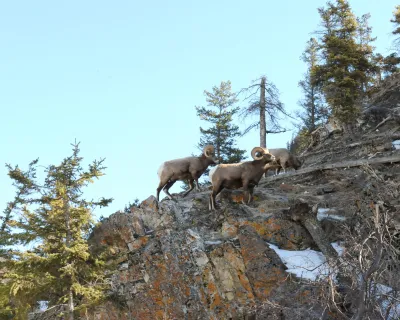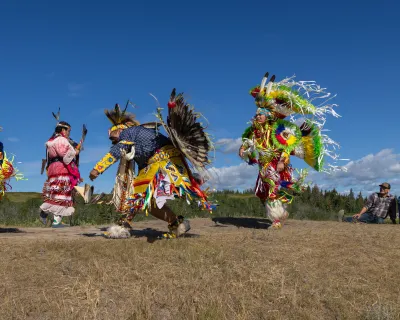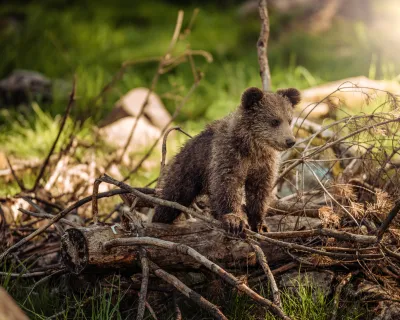Bear safety: know how and when to use bear spray
Do you know how to react when you see a bear in the wild? Face it, if he or she is chilling down at the creek, noshing on some berries or a tasty salmon and suddenly you walk in on its picnic the bear will be perturbed.
But what will it do? Is it going to walk off? Will the bear fake charge? Or are you in too deep? Here are some tips on how to handle a bear encounter.
Let's start with a look at bear behaviour, and why they react the way they do.
Why do bears charge or attack?
While we are still learning about bear behaviour, the most common reason bear specialists cite for bear aggression is that the bear wants to be left alone. A bear may be protecting its lunch or its offspring, or you may have startled it.
If it’s windy or a rumbling river washes over your chatter the bear may not hear you coming.
If you round a corner or break out of the trees unannounced, that’s going to cause it to react. If it did hear or smell you coming, most likely you won’t see it. It will have left the area.
How to avoid a bear encounter
Be proactive when you are in bear country. Travel in groups, and chat, sing or clap. Make noise before going around a corner or out of the trees. If you want to startle a bear with noise, carry an air horn. Bear bangers are dangerous and take too long to prep.
Do bear bells work?
No; Forget about the cute bear bell. Studies have proven that the ring of a bell gets absorbed into the ambient sounds in a forest like birds singing or wind in the leaves. If you are close enough to scare the bear with the trill of your bright orange whistle, you should have been reaching for a canister of bear spray ten metres ago.
That said, not every encounter with a bear should end with a canister of spray being deployed.
What to do when you encounter a bear
It can happen; you did all the right things and still you meet a bear on the trail. What next? Here are nine steps to follow to defuse an encounter.
- Stop advancing and stay focused on the bear. (This is not the time for selfies.)
- Have your bear spray canister at the ready.
- Talk or yell. The bear will look for you and smell the air and hopefully amble away.
- Give it time and space.
- Back away slowly—still talking calmly. Do not turn away and run.
- Watch to see which direction it is going and GO IN THE OPPOSITE DIRECTION!
- Warn other humans in the area there is a bear.
- Return to the car and call it a day. If it was more than a sighting, let the local wildlife authorities know what happened.
- If it keeps coming towards you, then you need to take precautions.
Maintain your Zen in the wild, sign up for our enews
How and when to use bear spray
If de-escalating the encounter and retreating doesn’t work, or the bear displays signs of aggresion or moves toward you, it’s time to ready for confrontation. This is where bear spray will come in.
We'll get to the how-to, but first, here are some answers to commonly asked questions about bear spray.
find YOUR zen
Sign up for ZenSeekers enews for local culture & outdoor adventure across Western Canada.
Does bear spray work?
Yes and no. When used properly, it can be very effective. However, a charging bear isn’t going to wait for you to fumble through your backpack and read the directions. Have that canister on your hip, dangling from a backpack, in a chest strap, or in the water bottle holder of your bike.
What is bear spray?
Bear spray is a natural oil substance that irritates the eyes and lungs; it's made from Oleoresin Capsicum mixed with propellant. Pepper spray is not the same thing. Look for larger bear spray canisters like Counter Assault that shoots 12 metres.
Where can I buy bear spray?
A commonly searched question is, "Can I buy bear spray at WalMart?" Perhaps you can, but the experts at your local outdoor store may be better suited to help you, and advise you on its use. ZenSeekers encourages you to support local.
How to deploy bear spray
First off, know how to use bear spray. When you buy it there is a tie-wrap holding the clip down. Cut that off. To practise, use an expired can (yes, they expire) or buy the inert training canister which is safer to use. Practice taking off the protective clip and shooting the spray.
Brace yourself, stand tall and stare down the bear. Shout to sound aggressive as you deploy bursts of spray. A good canister of bear spray only has 10 seconds of spray so don’t waste it when the bruin is across the valley.
Kevin Outdoors has released a good primer video, explaining bear spray use:
How to protect yourself if a bear is 18 metres away
If the bear is still coming your way at 18 metres away and the wind is blowing towards it, aim a short burst of pepper spray at the halfway mark. If it charges, it will run into the mist and feel the pepper in its eyes and lungs, and hopefully stop. If it keeps charging, keep yelling and - don’t stop spraying until the bear runs away.
What if the bear is only 10 metres away?
You probably have surprised the bear who was chomping on spring shoots, berries or a kill. Don’t second guess your actions, spray that canister straight at the bear in short bursts while making lots of noise. If it keeps coming at you, drop to the ground, lay face down and keep spraying the mist over your head so that you are in a cloud of spray.
Worst-case scenario
The worst-case scenario is when you are on a bike or running a trail or literally walk in on a bear—all without making noises on the advance. The bear is going to react fast. And so should you. This is when it is vitally important that the spray is at your fingertips.
If it takes down someone in your group, that person should roll into a ball, play dead but cover the back of the neck while you spray at the bear. Yes, your friend is going to get sprayed too, but the pain will go away. The trauma of being mangled by a bear won’t.
Remember you are in bear country. Bear encounters are rare but you do need to be prepared. The best protection is to avoid encounters by following the easy guidelines listed. And, to be on the safe side, have everyone in the group wear a canister because if the person in the lead has the spray on his belt and he surprises the bear and drops into a fetal position, you are all in trouble.
Bear safety resources
Other great sites to learn about using bear spray:
https://www.pc.gc.ca/en/pn-np/mtn/ours-bears/securite-safety/gaz-spray
https://www.youtube.com/watch?v=TZ5HJHZ8Mfw&t=1s&ab_channel=bebearaware
https://www.youtube.com/watch?v=TgE9o4xX1WI&ab_channel=AlbertaParks
Get out on the trails
Hazards exist in the wild (and aren't limited to bears) but you can still get out and enjoy the backcountry, with some basic preparation. Check local advisories in your area before heading out, and be prepared. Then continue on your adventure!
